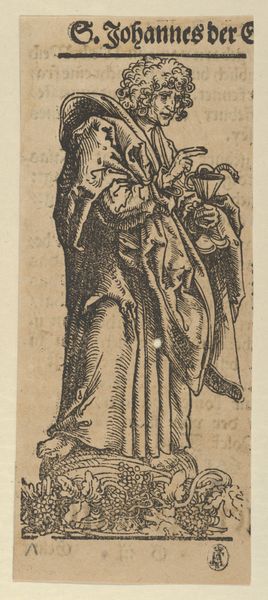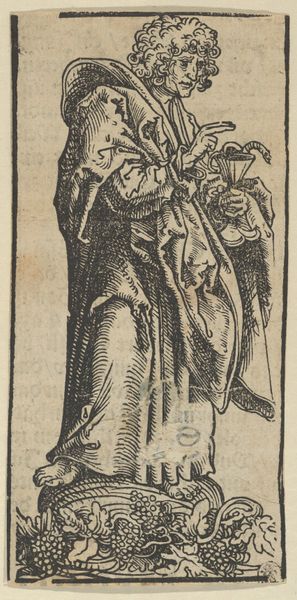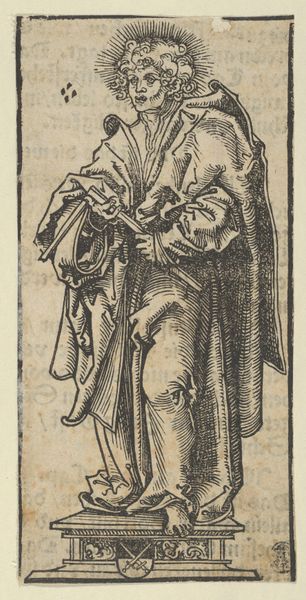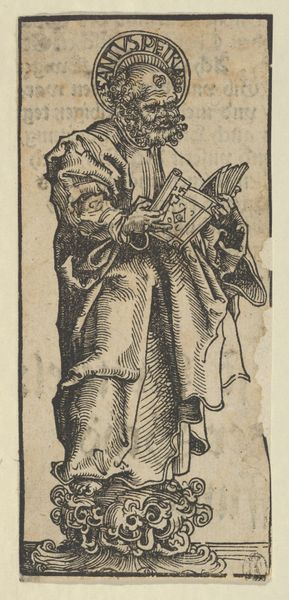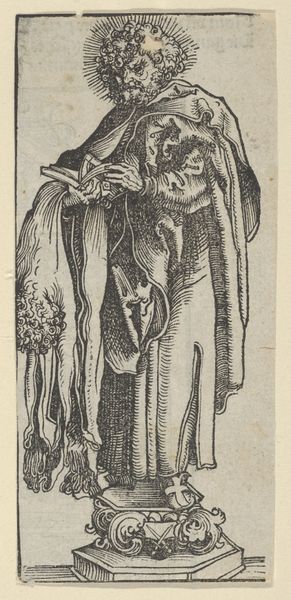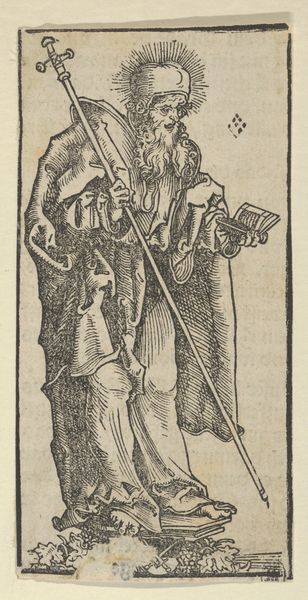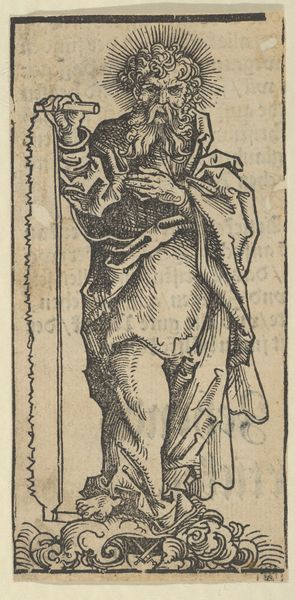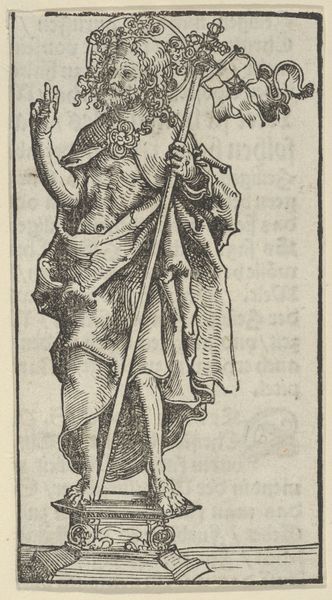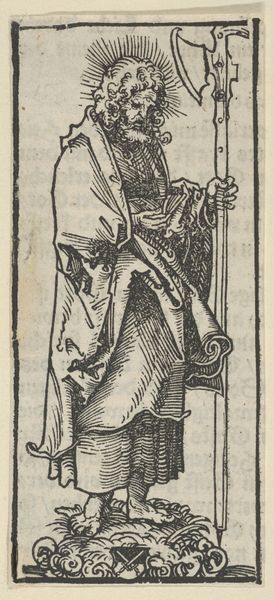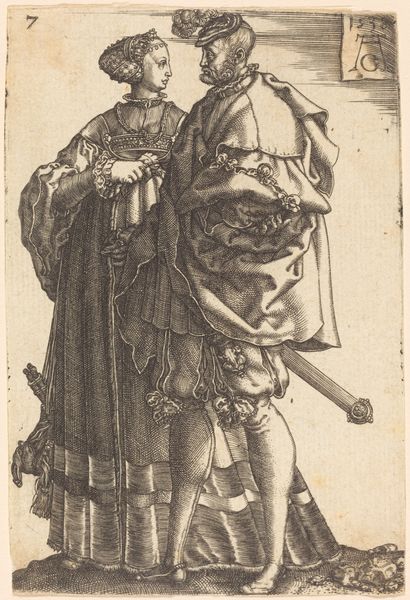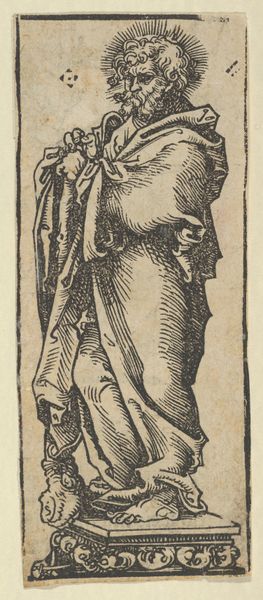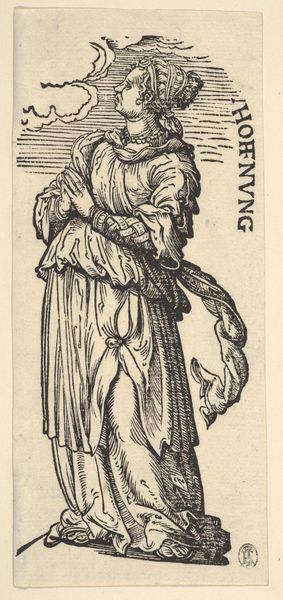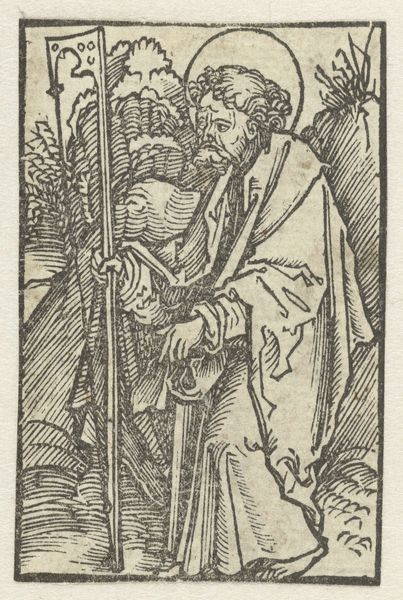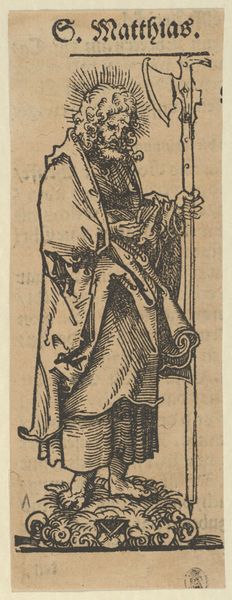
Silver Statuette of St. John the Baptist, from the Wittenberg Reliquaries 1472 - 1553
0:00
0:00
print, woodcut
#
portrait
# print
#
figuration
#
woodcut
#
northern-renaissance
Dimensions: Sheet: 5 3/16 × 2 7/16 in. (13.2 × 6.2 cm)
Copyright: Public Domain
Editor: So here we have Lucas Cranach the Elder's woodcut, "Silver Statuette of St. John the Baptist, from the Wittenberg Reliquaries," created sometime between 1472 and 1553. I’m struck by how much detail is packed into this small print. What really stands out to you? Curator: Well, considering Cranach's position within the Reformation, and this print’s connection to Wittenberg and its relics, it’s impossible not to see this as a deeply political image. The print's circulation had much to do with elector Frederick the Wise's claim to worldly power and spiritual authority. It served a specific, powerful, purpose in promoting his rule, and defining his land's religious identity, do you see how this fits into what's known as the "Northern Renaissance?" Editor: Ah, I think so. It’s about power, right? How the art promotes a specific version of religious belief and Frederick the Wise’s authority over that. It becomes more than just an artwork, it is used to control narrative. Curator: Precisely! This wasn’t simply a devotional image. Think about the context. The Wittenberg reliquaries, meant to impress and inspire faith, are here transformed into portable, reproducible prints. What happens when you make an object associated with wealth available to the public via prints? Editor: You are allowing it to exist as propaganda. I see what you mean: the meaning shifts from devotion to a claim of power and the public distribution acts like a spread of ideas to follow. So the role of the artist transforms too. Curator: Yes, and this really calls us to ask who controls this type of visual dissemination. Who consumes the image? Where and how it appears affects everything. Editor: This has given me so much more to think about when looking at early prints. It is an important perspective to carry in how to view an image critically, it has been such a great lesson, thank you. Curator: My pleasure. The socio-political lives of images are just as fascinating as their aesthetic qualities, if not more so!
Comments
No comments
Be the first to comment and join the conversation on the ultimate creative platform.
